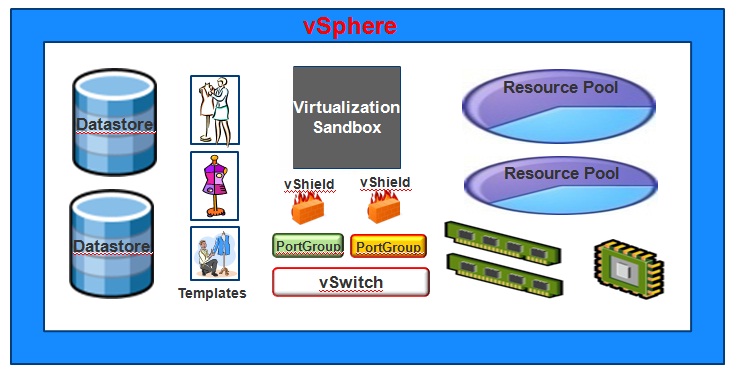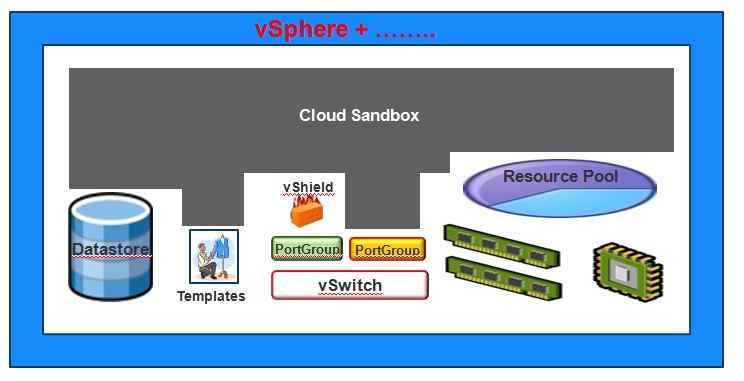VMworld 2012, Software Defined Datacenter and Random Rants and Suggestions
So far I have only missed a single VMworld in the last 8 years. Unfortunately this time I won't be there for VMworld 2012 in San Francisco. My session was turned down and I was told that I am supposed to know everything already so why going?
Thinking about it, it may very well not be so unfortunate that my session was rejected given his nature and associated challenges. If interested, this is what I proposed:
Title: VMware Cloud: Connecting the dots
Abstract: While there is a huge effort within VMware to rationalize and integrate our cloud stack, there is today an opportunity (or a necessity) to spend some time discussing how the different products, technologies and modules we made available in the last few months tie together. This session will cover and position many of the various products and technologies that comprise the VMware cloud stack. It will cover largely the IaaS layers but will also touch on some of the PaaS aspects. We will focus primarily on the bricks commonly used to build a cloud with a particular focus on how different user roles can consume these resources from different entry points into the cloud. This session is not going to be a deep dive into a particular product but it’s rather a broad view that will try to put a large number of products together. Come to this session if you have heard a lot of VMware products acronyms but you wouldn’t be able to position them consistently on a whiteboard.
Given what happened in the last month, it would have been an "interesting" (or challenging?) breakout session. To that point, I keep saying that VMware has changed more during the last month than in the last 10 years. And I mean it. I suggest those at VMworld to get deep into this.
VMware (really) started its business with ESX some 11 years ago and kept adding (awesome) stuff on top of it (and I think will continue to do so) for the foreseeable future. With the acquisition of DynamicOps and Nicira this kind of changed for a variety of reasons.
I previously made the point that VMware wants to be the VMware of Networking, expanding its reach into other areas of the datacenter. Now, with the Nicira acquisition, VMware have roughly 1.2 billion more reasons to prove that.
Other than moving quickly in adjacent markets the Nicira and DynamicOps acquisitions are a fundamental milestone for the VMware strategy. Not necessarily for the products per se but for the strategic messages associated with them (here and here). I am referring particularly to the strong heterogeneous messages VMware gave re being able to reach out to non vCloud based clouds (including Microsoft stacks, AWS and even physical systems) through the DynamicOps technologies. Similarly, I am referring to the commitment to continue to invest to keep Nicira NVP the best hypervisor agnostic SDN solution in the market (including support for OpenStack). These are truly ground breaking messages if you think where VMware was until a few months ago with their public strategy.
Those that have been following me on this blog or on twitter know what I think about heterogeneous deployments. To double click on this I would need one (or more) dedicated blog posts.
I am not going by the (VMware marketing) books here and I'll share what I genuinely think about this. My very personal opinion. All in all I think what happened is that VMware realized that customers, psychologically, were not ready to trade-off freedom of choice (more on this later) to gain a tremendous operational efficiency by reducing their choices. As simple as it is. The key word in the previous sentence is "psychologically".
I'd argue that companies that bet (heavily) on Microsoft indeed gained a great level of efficiencies by not having to integrate hundreds of moving parts (that was on MS to figure out). In return they have got a bit less freedom, admittedly. You could argue the same thing for AWS (sometimes pitched as "Hotel California"). I know it sounds controversial, but I have always tuned my attention on the positive aspects of these platforms (efficiency) rather than the negative aspects (less choice). This is what I was trying to convey with my Frankencloud messages for example.
I will go a step further to argue that, looking at my magic rectangle analysis, the DynamicOps acquisition makes us move a bit "to the left". Which isn't a bad thing at all given that most of customers are stuck in that situation (as I wrote months before in the article). I could argue that, to be a "true cloud", you need to move to the right. But what's the point of moving (quickly) to the right when 90% of the customers are on the far left of the picture? A vendor needs to get to a certain point of the journey with customers. There is no point in going too ahead of the curve if you are leaving them behind.
What I find hilarious, and one of the reasons for which I think this is all psychological, is because all these "heterogeneous technologies" (or those from other vendors proposing the same picture) won't avoid the lock-in everyone is concerned about. Simply because a lock-in (at some point) is inevitable. To read more about this have a look at my ABC theory of lock-in. I am also curious to find out how long it will take for people to realize that Nicira (or any other such tool for that matter) isn't the non-lock-in Nirvana they have been looking for. At the end of the day, if one compute virtualization software locks you in (vSphere), why shouldn't one network virtualization software do the same (NVP)? This is beyond me and clearly emotional and psychological.
I want to stress, again, that there isn't a way out. You can force yourself to believe that one day one "open" technology will solve all of your problems. Fair enough. Human beings need dreams to carry on. I understand that. At the end of the day vendors are driven by profits and free open source software is driven by what's cool. None of these things align well with your own goals as a customer I think. Make your choice and keep your fingers crossed! That's what you can really do in the end.
Oh but I am digressing here (rant over). I guess this was just to underline how this year is going to be an interesting VMworld with an interesting boost in the strategy to start covering domains that VMware has never been exploring before seriously (e.g. network and heterogeneity). If I was you I would spend a lot of my time exploring this during the event. I wish I could do a session next year on this "psychology" thing I was referring to. Nah... they would turn it down.
I am also excited about the announcements around the Software Defined Datacenter (SDDC). This reminds me of the VMworld breakout I did on vCloud Director 1.0 a couple of years ago where, for the lack of a better name, I was using the notion of a Cloud Sandbox. The concept I was trying to convey two years ago was that VMware was moving from this view of the (VMware) world...

... to this view of the (VMware) world...

Now I know. That isn't a Cloud Sandbox... It's rather a Software Defined Datacenter. Admittedly, a much better name!
I urge you to pay a lot of attention to that. That is incredibly powerful and a there are a lot of new exciting things coming. Albeit I'd admit we are at the beginning of a long journey in front of us and what you will see is clearly not the end state.
The third thing I suggest you to explore while there is the management part of the stack. I haven't been playing to much attention to it lately (well there are only 24 hours in a day) but I was amazed to see the progresses VMware made with vCenter Operations as well as APM (Application Performance Manager). There have been a lot of very interesting discussions internally about these tools and how they can either tie into the new world of DevOps as well as serve as innovative tools for more legacy way of managing infrastructures and applications.
For me... oh well, I guess I'll miss my blooming onion and I'll watch the show via the webcast service.
Have fun.
Massimo.